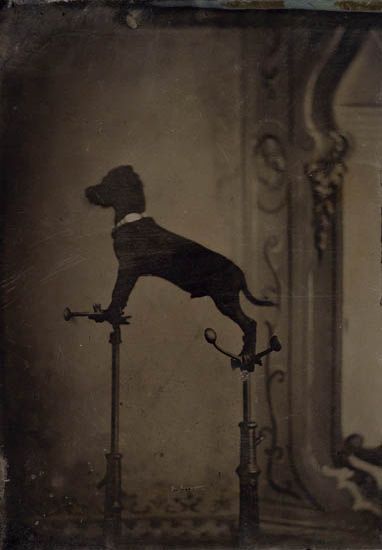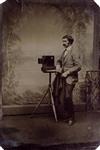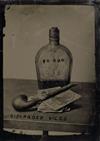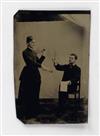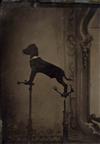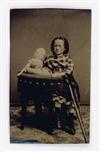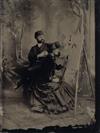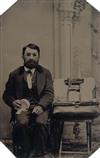Sale 2311 - Lot 31
Price Realized: $ 22,000
Price Realized: $ 26,400
?Final Price Realized includes Buyer’s Premium added to Hammer Price
Estimate: $ 20,000 - $ 30,000
(AMERICAN TINTYPES)
Collection of 179 unique and marvelous studio and "en plein air" tintype photographs. With pictures of a professional photographer posing with a camera, occupational tradesmen (including a salesman), outdoor scenes, humorous pictures made on vacations, military men, commercial images, studies with curious props (including a crocodile and a bear), musicians, children with toys, an African-American subject, a copy image, a view of a photographer's tent, and more. Approximately 25 are whole-plate and half-plates, 15 are quarter-plates, 105 are sixth-plates, and 5 are ninth-plates; 5 are in full cases; 5 are in half cases, 5 are in brass preservers, and 2 are housed in Eastlake frames. 1860s-1890s
Collection of 179 unique and marvelous studio and "en plein air" tintype photographs. With pictures of a professional photographer posing with a camera, occupational tradesmen (including a salesman), outdoor scenes, humorous pictures made on vacations, military men, commercial images, studies with curious props (including a crocodile and a bear), musicians, children with toys, an African-American subject, a copy image, a view of a photographer's tent, and more. Approximately 25 are whole-plate and half-plates, 15 are quarter-plates, 105 are sixth-plates, and 5 are ninth-plates; 5 are in full cases; 5 are in half cases, 5 are in brass preservers, and 2 are housed in Eastlake frames. 1860s-1890s
Additional Details
A wonderful collection of populist images in which Americans celebrate themselves and each other.
The tintype, an inexpensive form of photography that was introduced in the early 1860s and is employed by contemporary artists to this day, ushered in a new age of photographic portraiture. The formality associated with daguerreian imagery was replaced with a relaxed form of image-making, in which many subjects literally recreated themselves for the camera. The rise of the tintype corresponded to the notion that depictions of leisure time and recreational activities were as important an aspect of the American social landscape as the work portrait and commemorative family study.
Special images depicting two men vying for the affections of a prim Victorian woman are featured as well as a gentleman riding a hobby horse. A male performer clad in a white dress gestures extravagantly while a serious young women poses alongside a stereo viewer. There are several playful images of stunts, games and boyish shenanigans. The range of portraits speaks to the dynamic changes occuring across the United States. With more and more people migrating to the cities, social relationships changed, and people reformulated ideas of what constituted private and public identity.
The tintype, an inexpensive form of photography that was introduced in the early 1860s and is employed by contemporary artists to this day, ushered in a new age of photographic portraiture. The formality associated with daguerreian imagery was replaced with a relaxed form of image-making, in which many subjects literally recreated themselves for the camera. The rise of the tintype corresponded to the notion that depictions of leisure time and recreational activities were as important an aspect of the American social landscape as the work portrait and commemorative family study.
Special images depicting two men vying for the affections of a prim Victorian woman are featured as well as a gentleman riding a hobby horse. A male performer clad in a white dress gestures extravagantly while a serious young women poses alongside a stereo viewer. There are several playful images of stunts, games and boyish shenanigans. The range of portraits speaks to the dynamic changes occuring across the United States. With more and more people migrating to the cities, social relationships changed, and people reformulated ideas of what constituted private and public identity.
Exhibition Hours
Exhibition Hours
Aliquam vulputate ornare congue. Vestibulum maximus, libero in placerat faucibus, risus nisl molestie massa, ut maximus metus lectus vel lorem.






